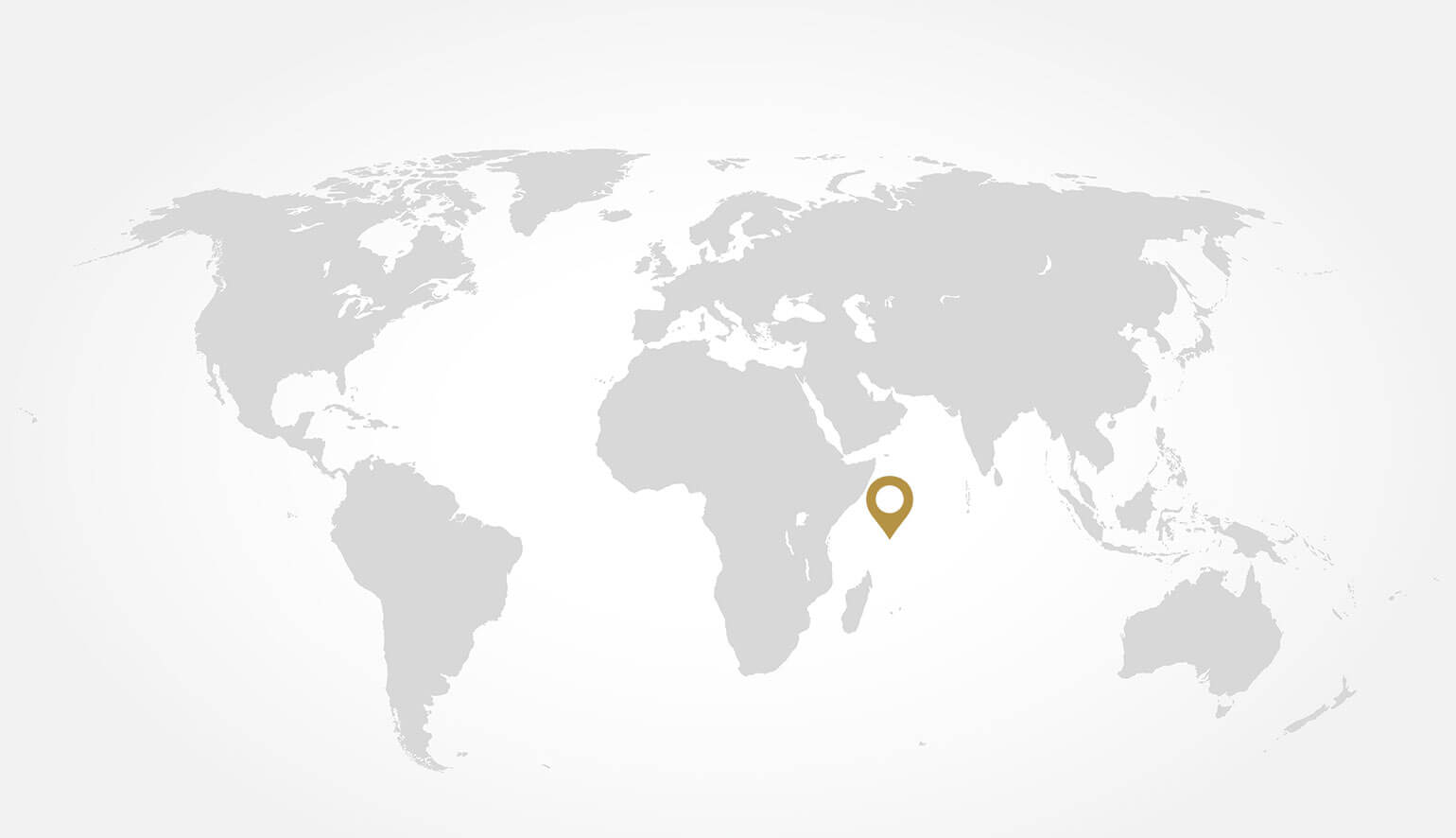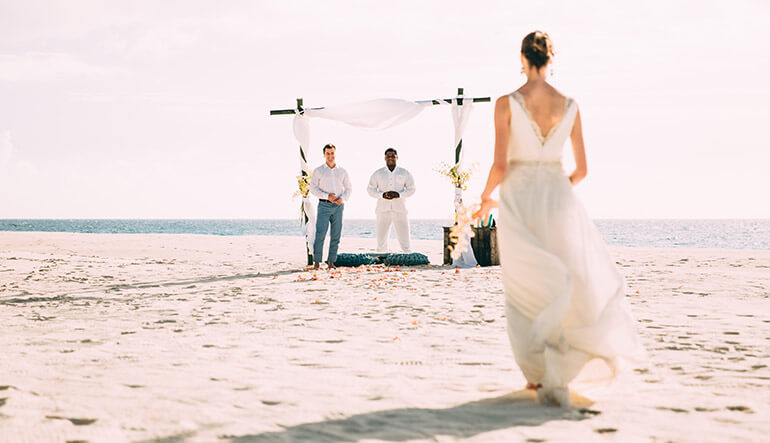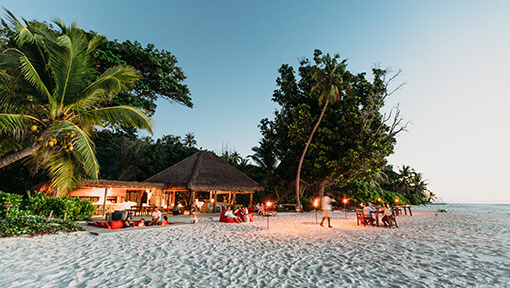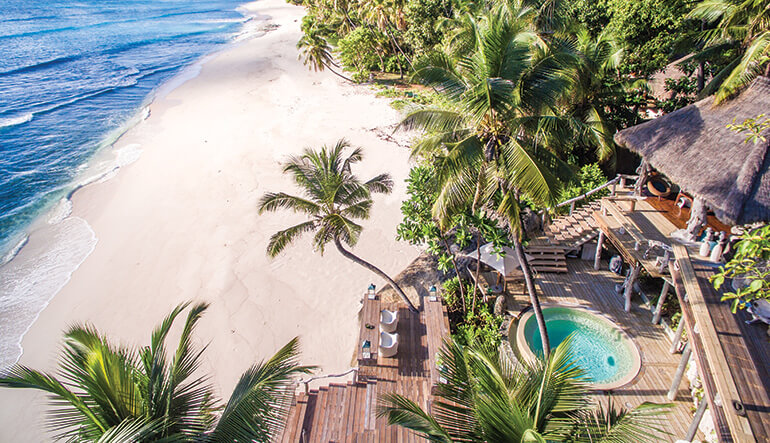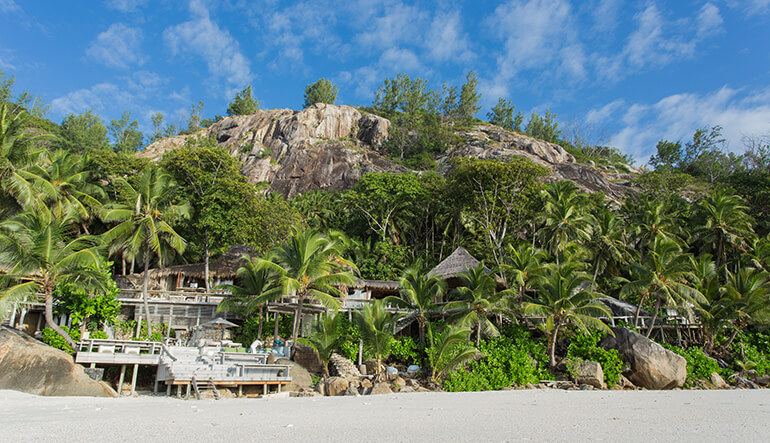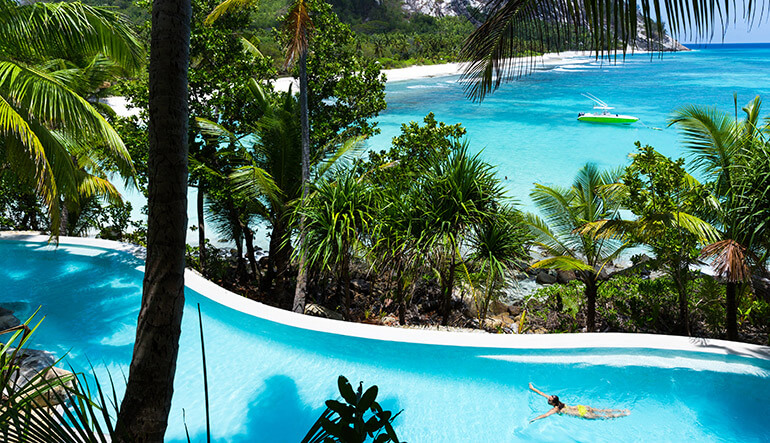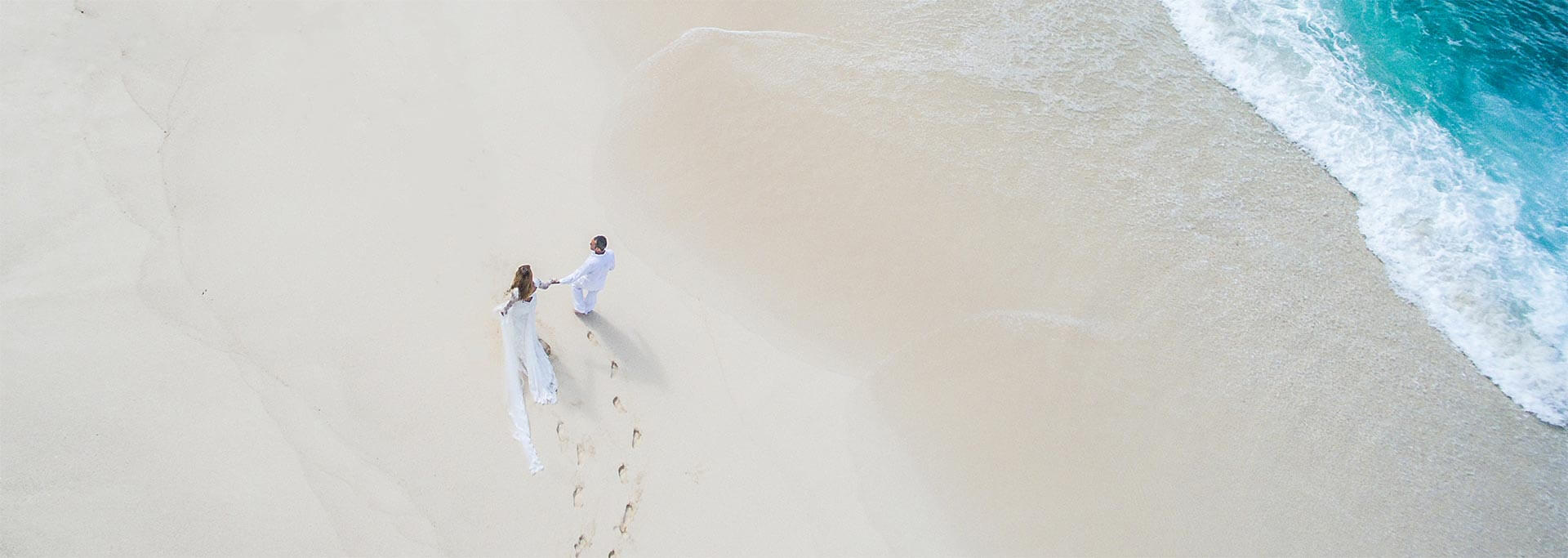Destination Guide
Seychelles
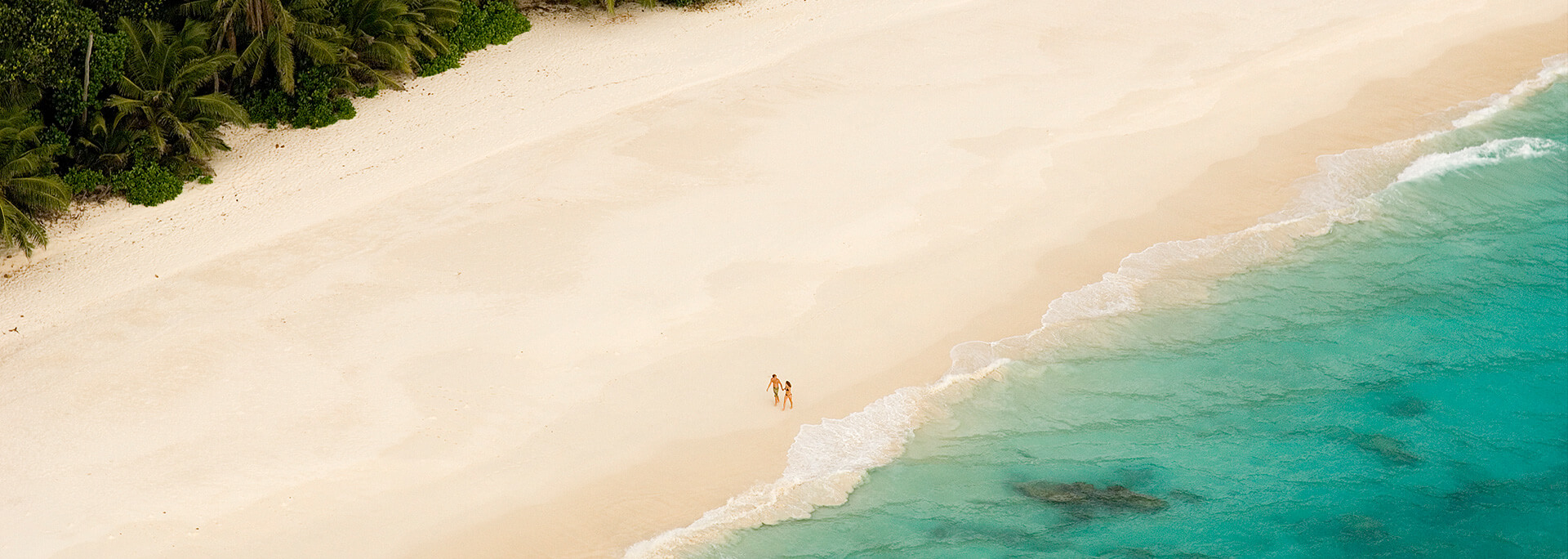
Few places on Earth compare to the shimmering beaches, cerulean waters and natural scenery of Seychelles. It’s the perfect island destination, offering a combination of relaxation and adventure. And not only are the beaches exquisite, but they’re less crowded, meaning that you can enjoy them all to yourself!
Spend your days walking along the coastal paths or snorkelling through the dazzling coral reefs. The luxury resorts on the island come complete with umbrella-clad cocktails, exclusive candlelit beach dinners, exciting activities and breath-taking views.
Located just off the coast of East Africa, the Seychelles Archipelago is comprised of over 115 mostly uninhibited islands. Its close location to East Africa, makes it easy to pair an island getaway with an African safari.
Why Travel to Seychelles
Seychelles embodies the quintessential island paradise experience. It has glorious powdery-white beaches, turquoise blue waters, extensive lush forests and the most unreal scenery. The balmy, tropical weather also provides for year-round bliss. In Seychelles, every day is a beach or exploring day.
Featuring both exclusive romantic hideaways and family-friendly resorts, Seychelles is an ideal holiday destination for couples, honeymooners and families. There is something for everyone to experience. From hiking, cycling, sailing, snorkelling and diving to shopping, exploring the islands in a Jeep and wandering around the gorgeous colonial capital city, Victoria.
Then there’s the food… Traditional Creole food features loads of fish and seafood, taking inspiration from its mix of cultures. Expect a taste explosion of Asian, European and African flavours. And of course, it wouldn’t be an island experience without rum. The local ‘Baka’ rum is a firm favourite amongst visitors to the islands.
Fun Facts
Each year, the island of Mahé comes alive celebrating the Festival Kreole. Usually held in the last week of October, this vibrant festival celebrates food, music, craft and performance. This is a must-see to truly experience the spirited energy of the locals on the island. Uninhabited until the 18th century, Seychelles is unique in that it offers ideal conditions for unique plant and animal species, as well as other natural wonders to flourish. With 200 plant species, over 900 species of fish, 275 bird species, 13 species of amphibians, 30 reptiles and more than 1,000 species of invertebrates. Seychelles boasts some pretty amazing and unique wildlife. Including the bare-legged Scops Owl, one of the rarest bird species in the world, which can be found at the Morne Seychellois National Park on Mahé Island. The islands are also famous for being one of two places in the world where you can find Giant Tortoises. The Seychelles Islands is the only place on Earth that the Coco de Mer grows. The Coco de Mer, which is also known as the sea coconut, produces the heaviest and largest seed in the world – about 15kg! The capital city of Seychelles, Victoria, is the smallest in the world and can easily be explored on foot.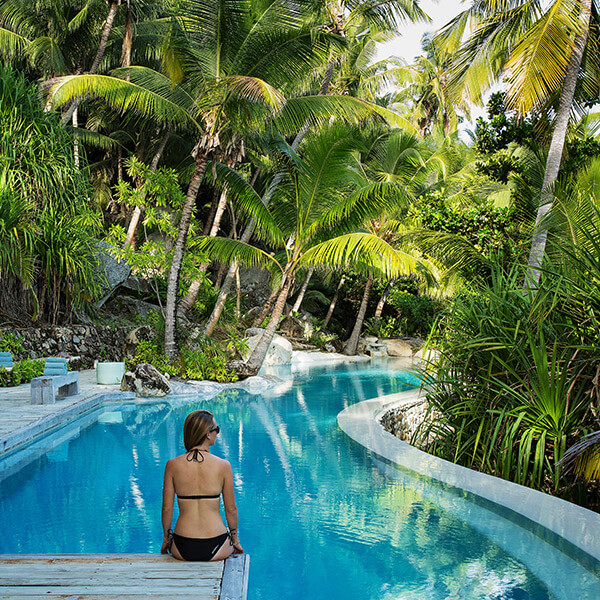

About Seychelles

Officially known as the Republic of Seychelles, the Seychelles is an island nation spanning an archipelago in the Indian Ocean. It is located about 1,600km east of Kenya and northeast of Madagascar.
Seychelles is the least populated country in Africa, with a population of only 97,000 people. Mahé is the largest island and entry point to Seychelles. Home to the capital city, Victoria, as well as some amazing resorts, restaurants and beaches, Mahé is the busiest of the islands. Praslin and La Digue are the other two main islands. The islands are not too far apart in Seychelles, making it easy to island-hop and explore a few islands on your trip.

Topography
The archipelago of Seychelles consists of 115 mostly deserted islands spread over 1 million km² of the western Indian Ocean. There are two main island groups: the Mahé group of more than 40 central, mountainous granitic islands and a second group of more than 70 outer, flat, coralline islands. The Mahé group of islands are rocky, typically with narrow white-sandy beaches, hilly central landscape and lush tropical vegetation. Morne Seychellois (905 metres) is the highest point in Seychelles, situated on Mahé. On the other hand, the coralline islands are flat with elevated coral reefs. These islands are mostly uninhabited, with the conditions only suited to the coconut palm trees and a few other species.
Conservation in Seychelles
Seychelles is an exemplary world leader in its sustainable tourism model. There is strict legislation requiring environmental review and consultations with conservation teams and the public for all tourism projects. Almost 50% of the land in the islands is under natural conservation. Nature Seychelles is the leading environmental organisation in the Western Indian Ocean, heading up most of the environmental conservation and management in Seychelles. One of the oldest marine protected areas in Seychelles, Cousin Island Special Reserve, is managed by Nature Seychelles. The organisation invites a small group of conservationists to help survey flora and fauna on the island. The primary objective of Nature Seychelles, according to its statutes, is to improve the conservation of biodiversity through scientific, management, educational and training programmes. The private North Island of Seychelles is also dedicated to conservation. The current conservation efforts are focused on rehabilitating the environment from its exploitation in the past. The first step is eradicating all alien species, both fauna and flora, and replacing them with indigenous plants and trees to allow the environment to flourish once again. There are also various endangered species living on and around Seychelles, with several protection projects underway ensuring the conservation of all species.When to Travel to Seychelles

April to November
Since Seychelles enjoys pleasant, tropical weather throughout the year, any time is a good time to visit. The average temperature is around 27°C and rarely goes below 24°C – making every day a beach day.
The best months to visit, however, are April, May, October and November. These are called the ‘transition months’, between the hot and humid northwest trade winds and the cooler southeast trade winds. December through April are the warmest months, with the highest humidity. March and April are the hottest months, although the temperature rarely goes over 31 °C.
For birdwatchers, the best times to visit are April (breeding season), May – September (nesting of Sooty Terns) and October (migration). Those looking to go diving should visit in March to May or September to November – this is when conditions are calm with good visibility. The best times for surfing and windsurfing, therefore, is from May to September, when it is most windy.


Accommodation in Seychelles

Offering a range of five-star hotels and exclusive island retreats, accommodation in Seychelles caters to travellers across the spectrum; from travellers looking for family-friendly activities to honeymooners looking for somewhere private and romantic.
For the ultimate exclusively luxurious stay in Seychelles, the private North Island has everything you could ever dream of.
With just 11 villas on the island, your footprints will be the only ones you see. It is the epitome of a remote island escape, complete with your own private beach, relaxing spa treatments, fine-dining restaurants and an extensive list of island activities.
Find out more about luxury accommodation in the Seychelles.
Things to do in Seychelles
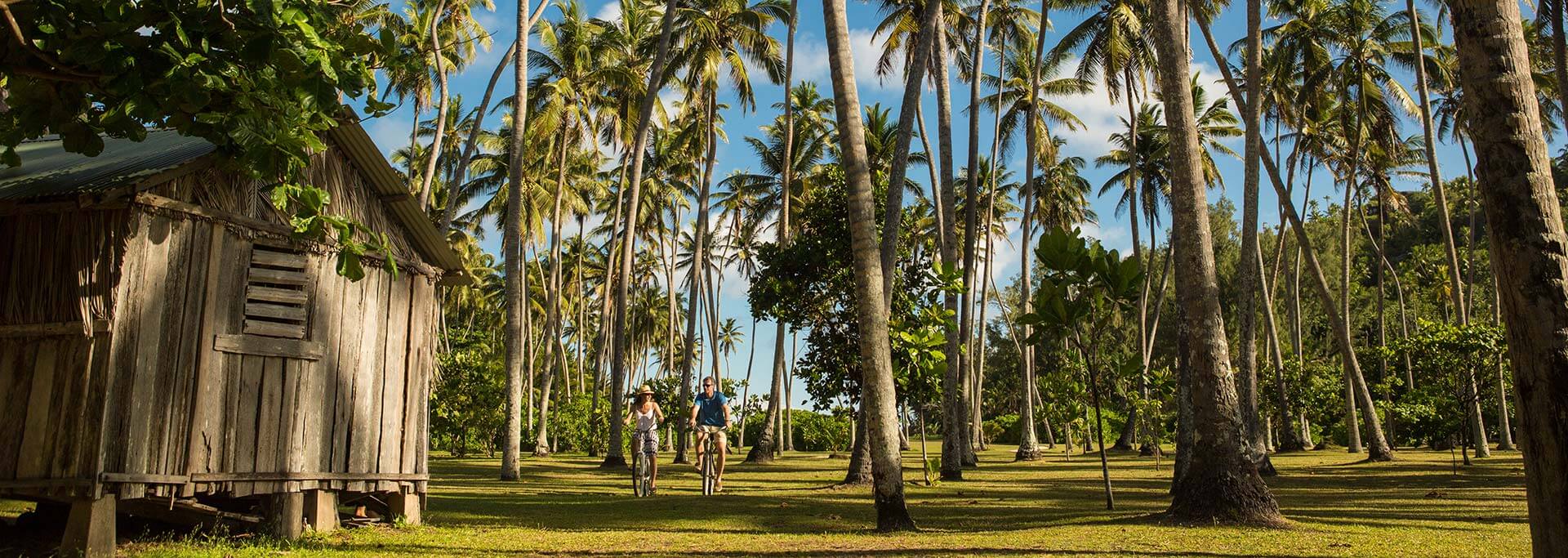
Seychelles is a playground for natural beauty, with plenty of things to keep you busy.
Visit the two UNESCO World Heritage Sites – Vallee de Mai and Aldabra Atoll. There are also six marine national parks, offering a magical underwater experience – whether diving or snorkelling. The coral reefs are bursting with whale sharks, rays, turtles and pufferfish. It truly is an underwater wonderland!
The Morne Seychellois National Park offers a host of coastal paths and trails, perfect for a leisurely hike seeking out some amazing views. With 220 bird species, it’s no wonder that keen birdwatchers flock to these remote islands. The best islands for seeing birds in Seychelles are Mahé, Praslin and Bird Island.

Look out for the Aldabra giant tortoises roaming many of the islands. With flying foxes, blue pigeons, black parrots and giant geckoes being a few of the other unique creatures to spy on.
Make sure to visit some of the neighbouring islands on boat trips – including some snorkelling on the way. Other fun activities include beach hopping, hiking, fishing, diving, cycling and sailing. And for those that love a bit’ o rum, you can take a tour of the famous Takamaka distillery on Mahé.
Seychelles is also a top destination for proposals – so use the opportunity to pop the question! Or simply enjoy a romantic candlelit dinner on the beach.
Need help? Talk to an expert!
Contact African Travel Canvas and we’ll help you book your dream vacation to Africa!

